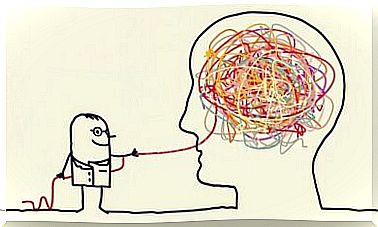The SDQ To Evaluate Skills And Difficulties

Experts estimate that 15% of children have some kind of mental disorder. However, it is difficult to detect and diagnose because in many cases the line between clinical symptomatology and actions and behaviors that are not indicative of a condition is often blurred. That’s where the SDQ comes in.
In this article we are therefore talking about this excellent tool for identifying possible mental health problems in children and young people.
Childhood is a crucial stage in which early detection can prevent the progression of various conditions. However, it is also a good time to build a child’s strengths and skills. That is precisely why this comprehensive questionnaire shows us both the weaknesses and the strengths of children.

The SDQ for early detection
The Strengths and Difficulties Questionnaire (SDQ) is a screening test. This means that the goal is to detect possible conditions. After the questionnaire, experts must confirm this information and then conduct an in-depth evaluation with other tools. However, we must say that it is a very valuable initial tool.
So, what exactly is the SDQ? It is a simple 25-item questionnaire divided into five scales. Four of these scales rate difficulties, while the last measures prosocial behavior. It can be applied to children between the ages of four and sixteen.
It even has different versions that can be completed by the parents, teachers or by the child themselves if they have the necessary cognitive maturity. Each statement has three answer options:
- not true
- somewhat true
- certainly true
Based on the answers, a score is obtained for each evaluated area, as well as an overall difficulty index. The scales that make up the questionnaire are as follows:
Emotional Symptoms
- The child often complains of headache, abdominal pain or nausea.
- They worry about many things and also often seem restless or worried.
- They also often feel unhappy, discouraged, or tearful.
- The child is nervous or dependent on others when faced with new situations and easily loses confidence.
- The child has many fears and is easily frightened.
Behavioral problems
- The child often has tantrums or is usually in a bad mood.
- They are usually obedient and usually do what adults ask of them. *
- The child often fights with other children or bullies others.
- They also often lie or cheat.
- They steal things from for example their home, school or other places.
Hyperactivity
- The child is restless, hyperactive and cannot sit still for long.
- He or she is constantly on the move and unruly.
- The child is easily distracted; their concentration fades easily.
- They think carefully before they act. *
- They finish what they start and have good concentration. *
Problems with peers
- The child is usually a bit lonely and often plays alone.
- He or she has at least one close friend. *
- The other children usually like him or her. *
- The other children bully or laugh at him or her.
- They get along better with adults than with other children.
The prosocial scale of the SDQ
- They consider the feelings of others.
- They often share with other children.
- The child offers help if someone is injured, upset or ill.
- They treat young children well.
- They offer their help to parents, teachers or other children.

Interpretation of the SDQ
When experts evaluate the questionnaire, they only consider the first four scales (not the section on prosocial behavior). They are given a ‘difficulty’ by considering the answers, and this will determine if a more in-depth exploration is needed due to the detection of an anomaly in the child’s profile.
The score is obtained as follows, per statement:
- ‘False’ is worth zero points.
- ‘Somewhat true’ is worth one point.
- “Certainly true” is worth two points.
However, for the items we have marked with an asterisk, it is the other way around: ‘false’ is two points, ‘somewhat true’ is one point, ‘certainly true’ is zero.
If a child has a score of 16 or more, experts believe that the child has some sort of emotional or behavioral problem and an in-depth evaluation is necessary. This questionnaire is therefore useful for all children, both at school and during a check-up.
In this way, experts can detect potential conditions that might not otherwise have been identified and thus pick them up early.
This allows them to make an accurate assessment and diagnosis, leading to appropriate treatment. As a result, it minimizes the impact of the disorder, slows its course and prevents future problems.









